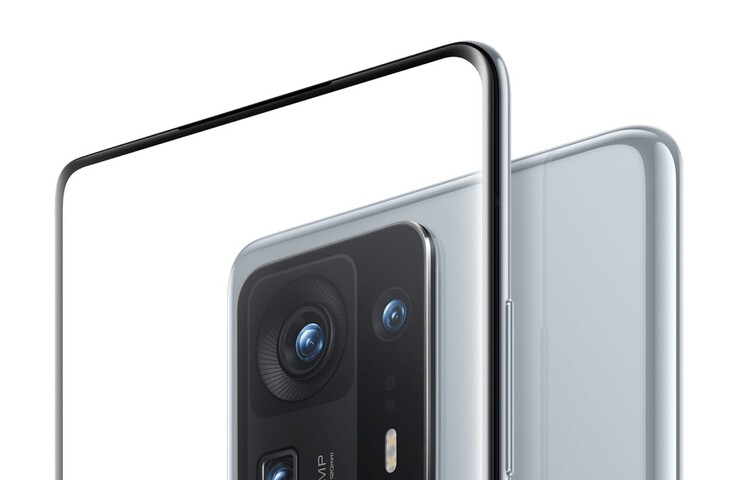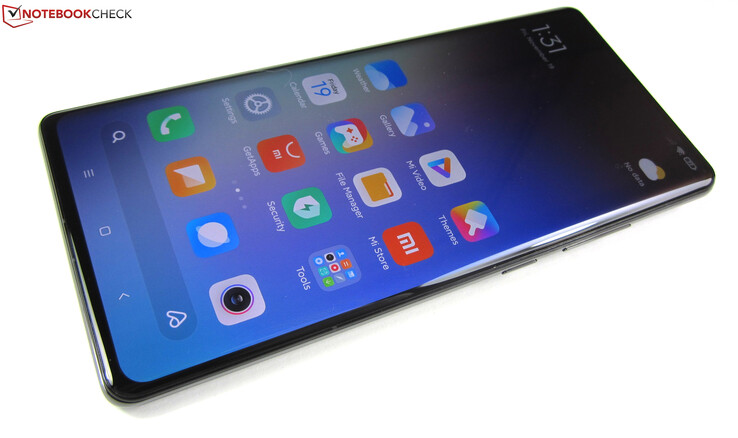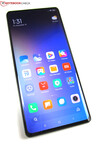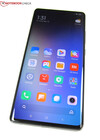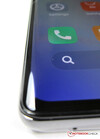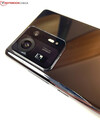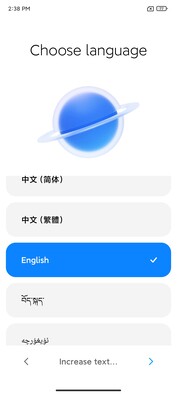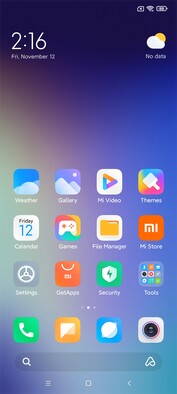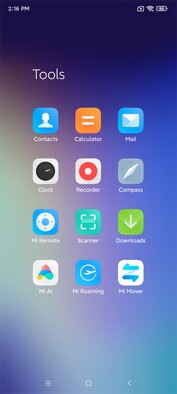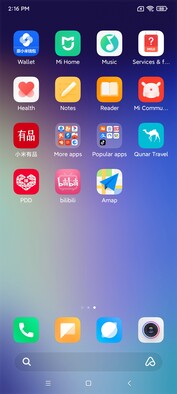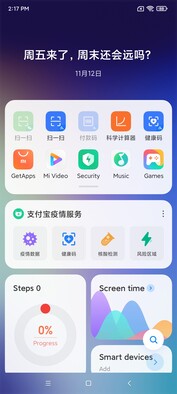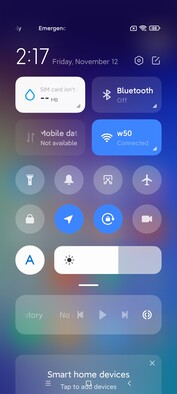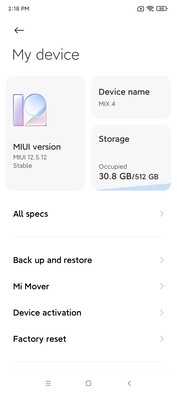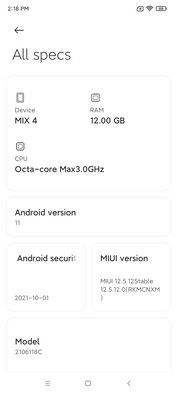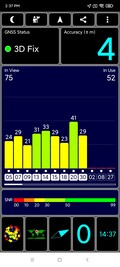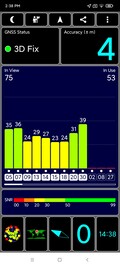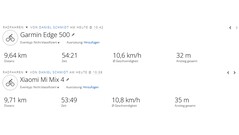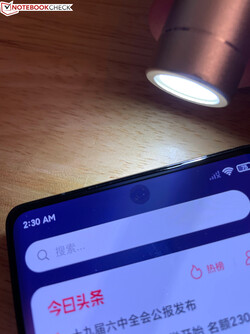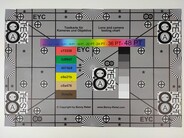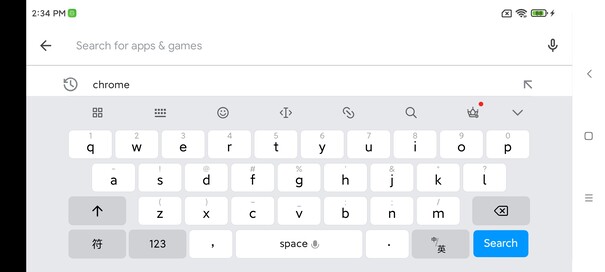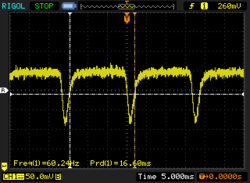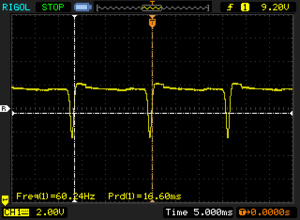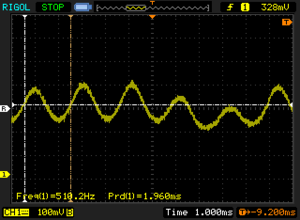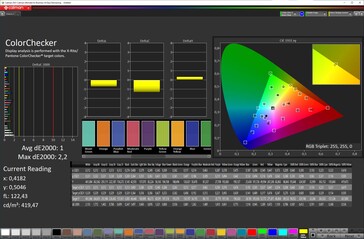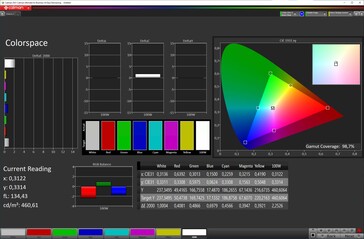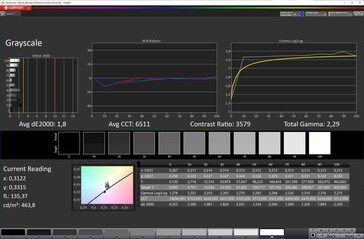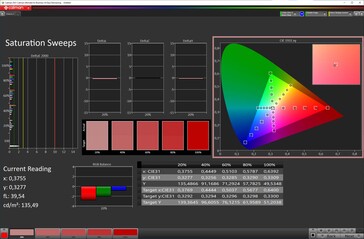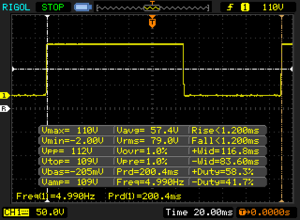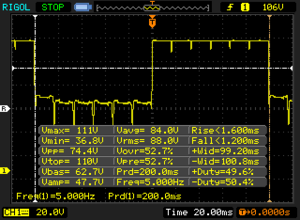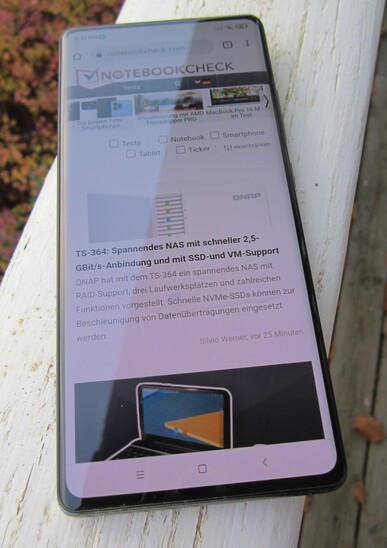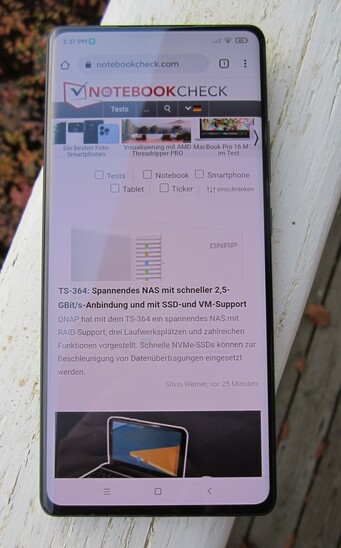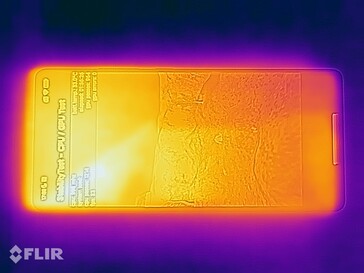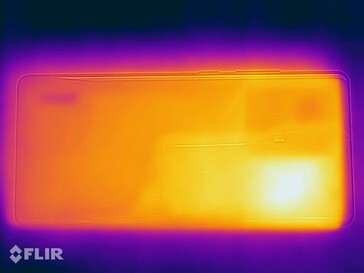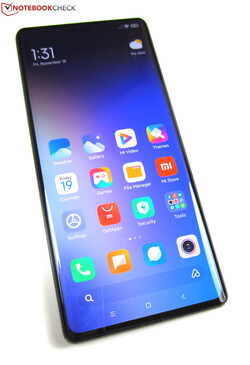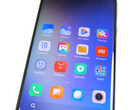Xiaomi Mix 4 smartphone review - High-end with an invisible selfie camera
With the Mix 4, Xiaomi introduces a new high-end smartphone with impressive-sounding hardware equipment. The 6.67-inch Mix 4 has one of the fastest mobile SoCs with the Snapdragon 888+ 5G. In addition, there are a 120-Hz AMOLED panel, up to 12 GB RAM and 512 GB storage, a 120-Watt charger offering quick charging, and 50-Watt wireless charging. The camera also shows some high-end ambitions with the 108-MP Samsung Isocell HMX1 as the main sensor.
But this isn't all, and the camera offers another interesting detail. The Mix 4 is the first Xiaomi smartphone with a front camera that is hidden under the screen. It has a 20-MP resolution and goes completely without any notch or pop-up mechanics. However, this isn't a completely new feature, since other smartphones such as the Samsung Galaxy Fold 3 and ZTE Axon 30 also offer an under-display camera.
Officially, the Xiaomi Mix 4 is only available in China, but you can also get it in Germany from importers such as TradingShenzhen who provided us with our test unit. We find out in this test how well the Mix 4 fares against the current high-end competitors and whether its under-display camera also does a good job in practice.
Possible Competitors in Comparison
Rating | Date | Model | Weight | Drive | Size | Resolution | Price |
|---|---|---|---|---|---|---|---|
| 87.7 % v7 (old) | 12 / 2021 | Xiaomi Mix 4 SD 888+ 5G, Adreno 660 | 225 g | 512 GB UFS 3.1 Flash | 6.67" | 2400x1080 | |
| 90.8 % v7 (old) | 10 / 2021 | Apple iPhone 13 Pro A15, A15 GPU 5-Core | 203 g | 256 GB NVMe | 6.10" | 2532x1170 | |
| 88.9 % v7 (old) | 03 / 2021 | Oppo Find X3 Pro SD 888 5G, Adreno 660 | 193 g | 256 GB UFS 3.1 Flash | 6.70" | 3216x1440 | |
| 90.4 % v7 (old) | 02 / 2021 | Samsung Galaxy S21 Ultra Exynos 2100 5G, Mali-G78 MP14 | 227 g | 128 GB UFS 3.1 Flash | 6.80" | 3200x1440 | |
| 87.2 % v7 (old) | 07 / 2021 | Sony Xperia 1 III SD 888 5G, Adreno 660 | 186 g | 256 GB UFS 3.1 Flash | 6.50" | 3840x1644 |
Case - Bezel-less design due to a curved display
Xiaomi has wrapped the Mix 4 in a unibody case made of glass and ceramics. The design and workmanship are very attractive and the case looks like made of one piece. While with a weight of 225 grams (~8 oz), it is not one of the lightest 6.67-inch smartphones, the slightly higher weight also underlines the high-quality impression.
The AMOLED display is protected by Gorilla Glass Victus, and its discretely rounded long edges merge into the unibody ceramic frame. On the sides and top, the bezels are only a couple of millimeters wide, but they are still sufficient to prevent unintended input on the 120-Hz display. Only the bottom bezel turns out slightly wider, but there is still the overall impression of an almost bezel-less design. The display takes up about 88% of the font area.
The shiny ceramic back makes the Mix 4 quite a looker, since the back cover is more reflective than the display. Unfortunately this also turns the back into a fingerprint magnet. Since it is also fairly slippery when holding it in the hand, it is recommended to use the included transparent case cover for the Mix 4.
If you disregard its shiny surface, the back cover has a simple design. The only things that stand out are the vertical Xiaomi lettering at the bottom edge and the massive camera module on top that sticks out from the back cover by several millimeters. While the camera system is always kept in black, you can choose among black, white, or gray color for the case cover.
Equipment - Up to 12 GB RAM and 512 GB storage in the Mix 4
The Xiaomi Mix 4 is available with 8 or 12 GB LPDDR5-RAM and 128, 256, or 512 GB UFS-3.1 storage. Four different storage combinations are offered: 8/128 GB, 8/256 GB, 12/256 GB, and 12/512 GB. The smallest version of the Mix 4 costs around 600 Euros (~$675) at TradingShenzhen, for example, and you have to pay about 790 Euros (~$889) for the top version with 12/512 GB of storage. There is no microSD slot.
The remaining equipment of the Mix 4 includes NFC, an IR blaster, and dual-SIM with 5G. The USB-C port supports only USB-2.0 speed but can also be used to connect peripheral devices with its OTG compatibility. Since there is no dedicated audio port, it also has to fulfil the role of the audio output. However, you have to purchase an adapter yourself, since this is not included.
Software - Google Play can be installed easily later
The Mix 4 includes Android 11 and Xiaomi's MIUI 12.5 user interface. Xiaomi usually provides its current smartphone models with updates in 3-month intervals, so that the Android security patches should also stay current at all times. At the time of our test (end of November), they were at the level of October 1, so still fairly fresh in our test unit with MIUI-Version 12.5.12.
Since you can currently only get the Mix 4 by importing it, there is also only an English/Chinese language ROM. Google Play is also not installed. However, since all the necessary services for it are already preinstalled on the Mix 4, you can easily install Google Play later using an APK file.
Communication and GNSS - Fast WiFi 6E and accurate GPS
The Mix 4 supports NFC and Bluetooth 5.2. The mobile communication frequency range is covered with 2G and 3G, as well as 14 4G bands and 9 5G bands. The supported bands also include all the 4G bands that are important in Germany (band 3, 7, 20) as well as the n78 5G band that is used by all the German 5G providers.
In terms of WLAN, the Mix 4 communicates with WiFi 6E, demonstrating very fast speeds with the transfer rates remaining very constant at the same time. In combination with our Linksys Nighthawk AX12 reference router, the transfer rate when sending earns it first place among our comparison devices, barely ahead of the Samsung Galaxy S21 Ultra. When receiving data, only the Oppo Find X3 Pro is faster, but also by quite a bit.
The Mi 4 finds its current location with the help of the GPS (L1, L5), Glonass (L1), Galieo (E1, E5a), Beidou (B1, B1c, B2a), and QZSS (L1, L5) satellite navigation systems. In our test, it succeeds outdoors as well as indoors with an accuracy of up to 4 meters (~13 ft).
In practice, the locating accuracy can often turn out even slightly better. The best example is our 10-km (~6.2 miles) bike tour, where the Xiaomi Mix 4 records the whole route practically just as accurately as the Garmin Edge 500 professional navigation device that we take for comparison.
Telephone Functions and Voice Quality
The voice quality of the Xiaomi Mix 4 is very good. The microphones capture voices easily understandable and also do a satisfactory job in speaker mode. VoLTE and VoWiFi are both supported by the Mix 4, as long as the service provider plays along.
Cameras - 20-MP selfie camera hidden under the display
An interesting equipment feature of the Xiaomi Mix 4 is its under-display selfie camera that offers a resolution of 20MP. It is very well hidden, so that you practically don't notice it in everyday operation. To be able to see it, you have to use some tricks such as shining a flashlight onto the display from the side.
Since the camera has to take pictures through the display, the image quality is decent but not outstanding. While it is able to extract some detail from the objects, the pictures always appear slightly blurry. The camera also doesn't like to take pictures against the light at all. However, it is still the best under-display front camera that you can get. Those who only occasionally use it for a video chat should be quite content with its performance.
The triple-camera on the back consists of a 108-MP main camera with an optical image stabilizer (OIS) and the Samsung Isocell HMX1 image sensor. This is accompanied by a 13-MP wide-angle lens with a 120° viewing angle and an 8-MP tele lens with OIS and 5x optical zoom.
We already know the 108-MP main camera from the Xiaomi Mi 11. Xiaomi has continued to optimize the software for the Mix 4, since it produces colors and grayscale more accurately than its sibling. However, compared to the achievements of other smartphones in this price class, we still aren't completely convinced by its performance. In daylight, the Mix 4 is able to take really good pictures that score with a lot of dynamics. But the colors appear too cool in some parts, and the level of detail could still be higher in some areas. This becomes particularly noticeable in weak surrounding light, even though the large sensor can still extract a lot of image information here.
The wide-angle lens offers a good image quality and takes pictures that are rich in detail but appear slightly blurry and grainy around the edges. The tele lens does a good job, and its 5x optical zoom and optical image stabilizer allow it to still take sharp pictures of objects that are further away. The maximum zoom level is 50x.
The Mix 4 is able to record videos in 4K and at 60 images per second. 8K recordings are also possible, but only at 24 FPS. HDR is also supported. The video quality is fairly good overall. By adjusting the zoom factor, you can switch between the main and the wide-angle lens while recording.
Image comparison
Choose a scene and navigate within the first image. One click changes the position on touchscreens. One click on the zoomed-in image opens the original in a new window. The first image shows the scaled photograph of the test device.
Daylight scene 1Daylight scene 2Ultra-wide angle5x zoomLowlight recordingWhen taking pictures under controlled light conditions, it becomes apparent that the main camera is able to reproduce colors fairly accurately, with the exception of some green and blue color tints. The accuracy suffers visibly in low light conditions (bottom color card at 1 Lux), and the test chart is only reproduced fairly blurry.
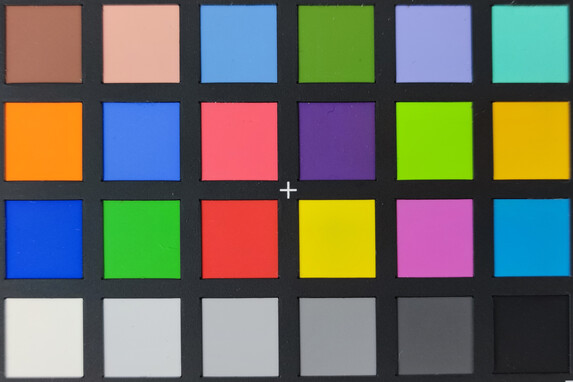
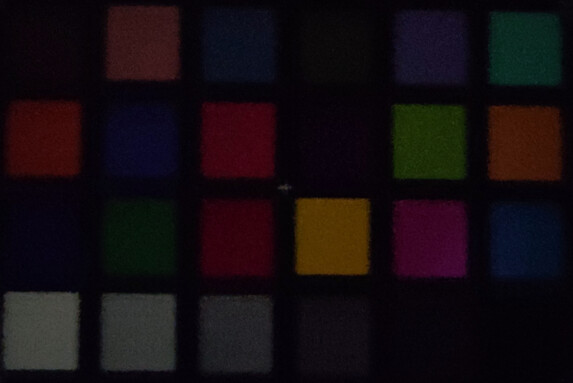
Accessories and Warranty - 120-Watt charger included
The box of the Xiaomi Mix 4 includes a 120-Watt charger with a CN plug that at 185 grams (~6.5 oz) weighs almost as much as the smartphone. In addition, there are a USB cable (Type-C-to-A), a SIM tool, and a transparent bumper case. A quick start manual is also included, but it requires you to know Chinese.
TradingShenzhen, the provider of our test unit, also includes a free EU plug adapter with the Xiaomi Mix 4. You can also choose the Flip Buds Pro Bluetooth earphones or an 80W wireless charging station among other accessories.
TradingShenzhen offers a 12-month warranty on the Xiaomi Mix 4.
Input Devices and Operation - Smooth display at all times
The operation of the Xiaomi Mix 4 is absolutely smooth. Its 120-Hz panel reduces blurriness of movements to a minimum and creates a very attractive image reproduction that is overall easy on the eyes.
Since the Mix 4 is currently not offered in the European market, with "Baidu IME for MIUI," "iFlytek for MIUI," and "Sagou Keyboard for MIUI," all the preinstalled keyboards are only optimized for Chinese users. However, once you have installed Google Play via APK file, you can replace the Chinese keyboards also with a standard keyboard such as Google's Gboard without any trouble. At that point, you can also replace the Mi browser with an alternative such as Chrome or Firefox.
You can unlock the Mix 4 biometrically either using a fingerprint sensor that is hidden under the AMOLED display, or via Face Unlock. Both methods work very quickly and reliably. However, if you use face unlocking, you have to make sure that the surrounding light is sufficiently bright, since otherwise the authentication might fail.
Display - A bright AMOLED panel with very accurate colors
The 6.67-inch AMOLED display has a 2400 x 1080 pixel resolution and reaches a brightness of 808 cd/m² on average (APL50: 803 cd/m² maximum). If the brightness sensor is not activated, the maximum is 485 cd/m², and we measure about 2.2 cd/m² with the lowest brightness setting.
The AMOLED panel uses pulse-width modulation (PWM) to control the brightness, which can become problematic for sensitive users. At a display brightness higher than 88%, the PWM frequency is a constant 60 Hz. At lower brightness levels (<88%), it varies between 163.4 and 510.2 Hz.
For those who are sensitive to PWM, Xiaomi also offers a flicker reduction (DC dimming). This is called "Antiflicker mode" in the display settings, and it reduces the flickering to a constant 60 Hz.
| |||||||||||||||||||||||||
Brightness Distribution: 98 %
Center on Battery: 817 cd/m²
Contrast: ∞:1 (Black: 0 cd/m²)
ΔE ColorChecker Calman: 1 | ∀{0.5-29.43 Ø4.77}
ΔE Greyscale Calman: 1.8 | ∀{0.09-98 Ø5}
98.7% sRGB (Calman 2D)
Gamma: 2.29
CCT: 6511 K
| Xiaomi Mix 4 AMOLED, 2400x1080, 6.7" | Apple iPhone 13 Pro OLED, 2532x1170, 6.1" | Oppo Find X3 Pro AMOLED, 3216x1440, 6.7" | Samsung Galaxy S21 Ultra Dynamic AMOLED 2X, 3200x1440, 6.8" | Sony Xperia 1 III OLED, 3840x1644, 6.5" | |
|---|---|---|---|---|---|
| Screen | 11% | 6% | -23% | -154% | |
| Brightness middle (cd/m²) | 817 | 1050 29% | 759 -7% | 910 11% | 537 -34% |
| Brightness (cd/m²) | 808 | 1058 31% | 776 -4% | 913 13% | 539 -33% |
| Brightness Distribution (%) | 98 | 98 0% | 94 -4% | 98 0% | 95 -3% |
| Black Level * (cd/m²) | |||||
| Colorchecker dE 2000 * | 1 | 1 -0% | 0.8 20% | 2 -100% | 4.78 -378% |
| Colorchecker dE 2000 max. * | 2.2 | 2.4 -9% | 1.8 18% | 3.1 -41% | 7.83 -256% |
| Greyscale dE 2000 * | 1.8 | 1.5 17% | 1.6 11% | 2.2 -22% | 5.8 -222% |
| Gamma | 2.29 96% | 2.2 100% | 2.23 99% | 2.06 107% | 2.363 93% |
| CCT | 6511 100% | 6504 100% | 6512 100% | 6512 100% | 7982 81% |
* ... smaller is better
Screen Flickering / PWM (Pulse-Width Modulation)
| Screen flickering / PWM detected | 60 Hz | ≤ 100 % brightness setting | |
The display backlight flickers at 60 Hz (worst case, e.g., utilizing PWM) Flickering detected at a brightness setting of 100 % and below. There should be no flickering or PWM above this brightness setting. The frequency of 60 Hz is very low, so the flickering may cause eyestrain and headaches after extended use. In comparison: 53 % of all tested devices do not use PWM to dim the display. If PWM was detected, an average of 8080 (minimum: 5 - maximum: 343500) Hz was measured. | |||
You can adjust the color reproduction of the Mix 4 by choosing among the "Vivid," "Saturated," and "Original color" color schemes and optionally also adjust the color space and RGB balance. However, you don't really need that much finetuning, since it is really already sufficient to pick the "Original color" scheme. The Mix 4 will then display the grayscale and particularly colors practically like the original tones, the color temperature will follow the ideal line, and the color balance will be almost perfect.
Display Response Times
| ↔ Response Time Black to White | ||
|---|---|---|
| 2.4 ms ... rise ↗ and fall ↘ combined | ↗ 1.2 ms rise | |
| ↘ 1.2 ms fall | ||
| The screen shows very fast response rates in our tests and should be very well suited for fast-paced gaming. In comparison, all tested devices range from 0.1 (minimum) to 240 (maximum) ms. » 11 % of all devices are better. This means that the measured response time is better than the average of all tested devices (20.2 ms). | ||
| ↔ Response Time 50% Grey to 80% Grey | ||
| 2.8 ms ... rise ↗ and fall ↘ combined | ↗ 1.6 ms rise | |
| ↘ 1.2 ms fall | ||
| The screen shows very fast response rates in our tests and should be very well suited for fast-paced gaming. In comparison, all tested devices range from 0.165 (minimum) to 636 (maximum) ms. » 11 % of all devices are better. This means that the measured response time is better than the average of all tested devices (31.6 ms). | ||
Performance - Xiaomi Mix 4 with a Snapdragon 888+
The Mix 4 uses heavy hitters for the performance, since its Snapdragon 888+ 5G belongs to the fastest mobile Mobil SoCs. In addition, the high-end Adreno 660 graphics chip and 12 GB of LPDDR5-RAM also ensure that there are no performance bottlenecks. You can also assume this, if you buy a smaller storage version of the Mix 4, such as the model with 8 GB RAM and 128 GB storage.
In the synthetic benchmarks, there is only a small difference between the Xiaomi Mix 4 and other comparable smartphones. The Oppo Find X3 Pro (Snapdragon 888 5G) and the Samsung Galaxy S21 Ultra with its Samsung Exynos 2100 5G perform at almost the same level as the Snapdragon 888+. Other smartphones with the Snapdragon 888+ such as the Asus ROG Phone 5s and Nubia RedMagic 6S Pro do better in some of the benchmarks.
In the browser performance, the Mix 4 is able to get a small advantage, but this might also be due to the more current version of Google Chrome. However, the Mix 4 is unable to surpass the Apple iPhone 13 Pro.
| GFXBench 3.1 | |
| on screen Manhattan ES 3.1 Onscreen (sort by value) | |
| Xiaomi Mix 4 | |
| Apple iPhone 13 Pro | |
| Oppo Find X3 Pro | |
| Samsung Galaxy S21 Ultra | |
| Average Qualcomm Snapdragon 888 Plus 5G (54 - 94, n=4) | |
| Average of class Smartphone (11 - 166, n=158, last 2 years) | |
| 1920x1080 Manhattan ES 3.1 Offscreen (sort by value) | |
| Xiaomi Mix 4 | |
| Apple iPhone 13 Pro | |
| Oppo Find X3 Pro | |
| Samsung Galaxy S21 Ultra | |
| Average Qualcomm Snapdragon 888 Plus 5G (62 - 95, n=4) | |
| Average of class Smartphone (8.4 - 413, n=157, last 2 years) | |
| AnTuTu v8 - Total Score (sort by value) | |
| Xiaomi Mix 4 | |
| Oppo Find X3 Pro | |
| Samsung Galaxy S21 Ultra | |
| Average Qualcomm Snapdragon 888 Plus 5G (695964 - 725649, n=3) | |
| AImark - Score v2.x (sort by value) | |
| Xiaomi Mix 4 | |
| Apple iPhone 13 Pro | |
| Samsung Galaxy S21 Ultra | |
| Average Qualcomm Snapdragon 888 Plus 5G (27321 - 286905, n=3) | |
| Jetstream 2 - 2.0 Total Score | |
| Apple iPhone 13 Pro (Safari 15) | |
| Average of class Smartphone (23.8 - 387, n=149, last 2 years) | |
| Xiaomi Mix 4 (Chrome 96.0.4664.45) | |
| Average Qualcomm Snapdragon 888 Plus 5G (75.9 - 125.4, n=4) | |
| Samsung Galaxy S21 Ultra (Chrome 88) | |
| JetStream 1.1 - Total Score | |
| Apple iPhone 13 Pro (Safari 15) | |
| Xiaomi Mix 4 (Chrome 96.0.4664.45) | |
| Average Qualcomm Snapdragon 888 Plus 5G (108.5 - 218, n=3) | |
| Oppo Find X3 Pro (Chrome 89) | |
| Samsung Galaxy S21 Ultra (Chrome 88) | |
| Speedometer 2.0 - Result 2.0 | |
| Apple iPhone 13 Pro (Safari 15) | |
| Average of class Smartphone (15.2 - 643, n=121, last 2 years) | |
| Xiaomi Mix 4 (Chrome 96.0.4664.45) | |
| Average Qualcomm Snapdragon 888 Plus 5G (79.8 - 114, n=3) | |
| Samsung Galaxy S21 Ultra (Chrome 88) | |
| WebXPRT 3 - Overall | |
| Apple iPhone 13 Pro (Safari 15) | |
| Average of class Smartphone (38 - 380, n=30, last 2 years) | |
| Xiaomi Mix 4 (Chrome 96.0.4664.45) | |
| Average Qualcomm Snapdragon 888 Plus 5G (120 - 165, n=3) | |
| Samsung Galaxy S21 Ultra (Chrome 88) | |
| Oppo Find X3 Pro (Chrome 89) | |
| Octane V2 - Total Score | |
| Apple iPhone 13 Pro (Safari 15) | |
| Average of class Smartphone (2228 - 126661, n=197, last 2 years) | |
| Xiaomi Mix 4 (Chrome 96.0.4664.45) | |
| Average Qualcomm Snapdragon 888 Plus 5G (28695 - 49046, n=4) | |
| Oppo Find X3 Pro (Chrome 89) | |
| Samsung Galaxy S21 Ultra (Chrome 88) | |
| Mozilla Kraken 1.1 - Total | |
| Samsung Galaxy S21 Ultra (Chrome 88) | |
| Oppo Find X3 Pro (Chrome 89) | |
| Average Qualcomm Snapdragon 888 Plus 5G (1118 - 1443, n=4) | |
| Xiaomi Mix 4 (Chrome 96.0.4664.45) | |
| Average of class Smartphone (257 - 28190, n=157, last 2 years) | |
| Apple iPhone 13 Pro (Safari 15) | |
* ... smaller is better
The UFS-3.1 storage of the Xiaomi Mix 4 achieves read and write speeds that are very high throughout. However, the Samsung Galaxy S21 Ultra is still a tad faster.
| Xiaomi Mix 4 | Oppo Find X3 Pro | Samsung Galaxy S21 Ultra | Sony Xperia 1 III | Average 512 GB UFS 3.1 Flash | Average of class Smartphone | |
|---|---|---|---|---|---|---|
| AndroBench 3-5 | 0% | 15% | 6% | 30% | 53% | |
| Sequential Read 256KB (MB/s) | 1938 | 1779 -8% | 1710 -12% | 1948 1% | 1874 ? -3% | 2242 ? 16% |
| Sequential Write 256KB (MB/s) | 751 | 759 1% | 1077 43% | 742 -1% | 1338 ? 78% | 1881 ? 150% |
| Random Read 4KB (MB/s) | 242.1 | 273.3 13% | 316.7 31% | 267.8 11% | 290 ? 20% | 299 ? 24% |
| Random Write 4KB (MB/s) | 284.2 | 267.1 -6% | 279.5 -2% | 316.8 11% | 357 ? 26% | 345 ? 21% |
Games - No automatic advantage with the 120-Hz screen
The 120-Hz display, an abundance of performance, and dual speakers make the Xiaomi Mix 4 basically a good choice for gaming. While games also run smoothly at high detail levels, it is not always guaranteed that they will run at up to 120 frames per second. If we take PUBG Mobile as an example, more than 30 FPS are not possible in the relatively moderate HD/High setting, even if the refresh rate is set to 120 Hz.
We determine the frame rates with Gamebench. Unfortunately, games other than PUBG Mobile could not be tested with the tool.
Emissions - Hybrid dual speakers in the Mix 4
Temperature
The Xiaomi Mix 4 remains cool during operation, and the surface only warms up to a maximum of 30.4 °C (87 °F) even after one hour of the stress test.
The smartphone also keeps its internal temperatures well under control. In the 3DMark Wild Life stress test, the Mix 4 achieves a result close to the 100% mark, and the benchmark result almost always remains constant during the whole duration of the test. We would have also liked to analyze the GFXBench stress tests, but the app always crashed before showing the results.
(+) The maximum temperature on the upper side is 31 °C / 88 F, compared to the average of 35.2 °C / 95 F, ranging from 21.9 to 247 °C for the class Smartphone.
(+) The bottom heats up to a maximum of 30.4 °C / 87 F, compared to the average of 34 °C / 93 F
(+) In idle usage, the average temperature for the upper side is 26.6 °C / 80 F, compared to the device average of 32.9 °C / 91 F.
3DMark Wild Life Stress Test
| 3DMark | |
| Wild Life Stress Test Stability | |
| Xiaomi Mix 4 | |
| Wild Life Extreme Stress Test | |
| Xiaomi Mix 4 | |
Speaker
Looking at the exterior of the Mix 4, it appears to only have a single speaker. However, in reality you get a stereo sound, since the earpiece that sits underneath the display is used as a second speaker. With this, the Mix 4 produces a sound that is poor in bass but very clear and balanced overall. It is only slightly distorted at maximum volume. You can connect external audio devices via Bluetooth 5.2 or a USB-C adapter.
Xiaomi Mix 4 audio analysis
(+) | speakers can play relatively loud (88.8 dB)
Bass 100 - 315 Hz
(-) | nearly no bass - on average 28.6% lower than median
(±) | linearity of bass is average (8.6% delta to prev. frequency)
Mids 400 - 2000 Hz
(+) | balanced mids - only 4.9% away from median
(+) | mids are linear (4.7% delta to prev. frequency)
Highs 2 - 16 kHz
(+) | balanced highs - only 4.9% away from median
(+) | highs are linear (4.4% delta to prev. frequency)
Overall 100 - 16.000 Hz
(±) | linearity of overall sound is average (19.3% difference to median)
Compared to same class
» 26% of all tested devices in this class were better, 9% similar, 65% worse
» The best had a delta of 11%, average was 35%, worst was 134%
Compared to all devices tested
» 46% of all tested devices were better, 8% similar, 46% worse
» The best had a delta of 4%, average was 24%, worst was 134%
Samsung Galaxy S21 Ultra audio analysis
(+) | speakers can play relatively loud (88 dB)
Bass 100 - 315 Hz
(-) | nearly no bass - on average 22.9% lower than median
(±) | linearity of bass is average (11.9% delta to prev. frequency)
Mids 400 - 2000 Hz
(+) | balanced mids - only 3.4% away from median
(+) | mids are linear (4.5% delta to prev. frequency)
Highs 2 - 16 kHz
(+) | balanced highs - only 4.2% away from median
(+) | highs are linear (6.3% delta to prev. frequency)
Overall 100 - 16.000 Hz
(+) | overall sound is linear (14.9% difference to median)
Compared to same class
» 2% of all tested devices in this class were better, 2% similar, 96% worse
» The best had a delta of 11%, average was 35%, worst was 134%
Compared to all devices tested
» 19% of all tested devices were better, 4% similar, 76% worse
» The best had a delta of 4%, average was 24%, worst was 134%
Battery Life - Fully recharged after 25 minutes
Power Consumption
The Xiaomi Mix 4 can be recharged using the included 120-Watt charger. With a weight of 185 gram (~6.5 oz), it is almost as heavy as the smartphone. However, not only the weight is impressive, but the charging power as well.
During our test, the empty battery is recharged completely up to 100% after only just 36 minutes. If you activate the "Boost Charging Speed" option, it is even faster, and the charging time is then reduced to 25 minutes, reaching 50% of charge already after barely 12 minutes and 80% after 19 minutes. When the charging booster is activated, the smartphone heats up noticeably, but it never gets uncomfortably warm.
We did not notice any conspicuous behavior during the charging of the Xiaomi Mix 4.
| Off / Standby | |
| Idle | |
| Load |
|
Key:
min: | |
| Xiaomi Mix 4 4500 mAh | Apple iPhone 13 Pro 3095 mAh | Oppo Find X3 Pro 4500 mAh | Samsung Galaxy S21 Ultra 5000 mAh | Average Qualcomm Snapdragon 888 Plus 5G | Average of class Smartphone | |
|---|---|---|---|---|---|---|
| Power Consumption | -72% | -178% | -189% | -106% | -170% | |
| Idle Minimum * (Watt) | 0.12 | 0.51 -325% | 0.93 -675% | 1.06 -783% | 0.65 ? -442% | 0.849 ? -608% |
| Idle Average * (Watt) | 1.04 | 1.54 -48% | 1.54 -48% | 1.19 -14% | 1.353 ? -30% | 1.446 ? -39% |
| Idle Maximum * (Watt) | 1.23 | 1.57 -28% | 1.69 -37% | 1.2 2% | 1.565 ? -27% | 1.632 ? -33% |
| Load Average * (Watt) | 3.04 | 3.06 -1% | 6.38 -110% | 6.46 -113% | 4.03 ? -33% | 6.93 ? -128% |
| Load Maximum * (Watt) | 7.84 | 4.59 41% | 9.58 -22% | 10.76 -37% | 7.54 ? 4% | 11.3 ? -44% |
* ... smaller is better
Power Consumption: Geekbench (150 cd/m²)
Power Consumption: GFXBench (150 cd/m²)
Battery Life
With more than 15 hours of web surfing and more than 16 hours of playing videos, the Mix 4 achieves a very good battery life. Except for the Apple iPhone 13 Pro endurance champion, none of the high-end competitors is able to keep up with the Xiaomi.
As always, we ran the battery tests with the brightness adjusted to 150 cd/m², but we also activated the 120-Hz screen refresh rate. The battery life should be even better with a refresh rate of 60 Hz.
| Xiaomi Mix 4 4500 mAh | Apple iPhone 13 Pro 3095 mAh | Oppo Find X3 Pro 4500 mAh | Samsung Galaxy S21 Ultra 5000 mAh | Sony Xperia 1 III 4500 mAh | |
|---|---|---|---|---|---|
| Battery runtime | 22% | -18% | -6% | -42% | |
| Reader / Idle (h) | 42 | 43.6 4% | 23.5 -44% | ||
| H.264 (h) | 16.8 | 24.9 48% | 21.8 30% | ||
| WiFi v1.3 (h) | 15.4 | 16.6 8% | 12.6 -18% | 11.7 -24% | 8.9 -42% |
| Load (h) | 4.4 | 5.6 27% | 5.1 16% |
Pros
Cons
Verdict on the Xiaomi Mix 4
With the Mix 4, Xiaomi offers a very good high-end smartphone. In our test, it impresses with a very high system performance, a bright AMOLED display with 120 Hz, a solid 108-MP camera, and a well-equipped communication module with fast WiFi 6E and 5G with dual-SIM. With its high-quality glass/ceramics unibody, the Mix 4 also plays in the first league in terms of its visual appearance.
Two equipment characteristics also make the smartphone special in the high-end range. First, there is the under-display camera, which makes the Mix 4 attractive to all users who don't like a camera notch. The 20-MP camera that is hidden under the display does a good job, but its quality is not quite as high as that of regular selfie cameras.
The Xiaomi Mix 4, which is currently only available as an import, is a powerful high-end smartphone that distinguishes itself from the competitors with its under-display camera and the extremely fast charging.
The second particularity is the extremely fast charging using the 120-Watt charger that is also included with the Xiaomi 11T Pro. Using this, the Mix 4 is completely recharged to 100% after only 25 minutes in our test. With such a crazy charging speed, you neither need to recharge the phone overnight, nor wait for a long time until the battery has sufficient charge for everyday usage.
There are only few disadvantages in the Mix 4. As already mentioned, the quality of the selfie camera could be better, but the current level of the under-display technology apparently doesn't allow for anything more at this point. The missing audio port can be replaced via USB-C adapter. But due to the lack of a microSD slot, you cannot expand the storage.
Alternatives to the Xiaomi Mix 4 are the Oppo Find X3 Pro, the Samsung Galaxy S21 Ultra, and the Xiaomi 11T Pro, for example.
Price and Availability
The Xiaomi Mix 4 is currently only available via importers such as TradingShenzhen or Giztop starting from $699 for the model with 8 GB RAM and 128 GB storage, and $919 for the top model (12/512GB).
Xiaomi Mix 4
- 08/30/2022 v7 (old)
Manuel Masiero


